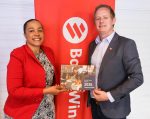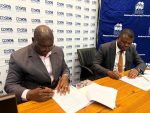First oil in 2028, while plausible, would be impressive and for that to happen, some really good results from the current Namibia appraisal program are required, Justin Cochrane, Africa Upstream Regional Research Director for S&P Global Commodity Insights has said.
Cochrane who spoke to ECP on what the pathway to first oil looks like for Namibia highlighted that the first step is appraisal drilling which is underway and will go a long way in firming up the numbers.
“It’s worth mentioning that the resource numbers that are in the public domain are not from the operators. At some point, once the fields have been sufficiently appraised, direct numbers from the operators will be released, including oil quality and gas volumes. The gas volumes are important, as this will significantly affect the design concepts. It’s difficult to stress the importance of this, as there is currently speculation around well deliverability.
“There are suggestions that the reservoir quality at Graff-1 may not be as good as at Venus-1 or Jonker-1X, and there seems to be a significant volume of gas. Again, appraisal drilling and more flow testing is required. The next step is the Front-End Engineering design – these fields are located a long way from the coast in very, very deep water, and decisions around what to do with the gas need to be taken, followed by a final investment decision. It’s unlikely that a repurposed FPSO would be considered, as Eni has done with its Baleine discovery in Ivory Coast, as the conditions at the field locations in Namibia are far more complex and water depths are a serious consideration,” he explained.
He went on to speak on how he would evaluate the prospectivity of Namibia’s other offshore basins, as well as its onshore acreage. He noted that it looks as if the source rock is within the oil generating window and light oil was recovered to surface from the Wingat-1 well, so there is clearly a working petroleum system within the Walvis Sub-Basin.
“To date, neither oil nor gas has been recovered from the Lüderitz Sub-Basin or the Namibe Basin. More drilling is required. While there are no upcoming plans to drill within Lüderitz, ExxonMobil is expected to drill a well within the Angolan portion of the Namibe Basin in 2024. Should the well be successful, it could contribute to de-risking ExxonMobil’s Namibian Namibe acreage.
“In terms of onshore exploration, ReconAfrica has drilled three wells. The company believes a working petroleum system has been identified, but no discoveries have been declared. ReconAfrica seems to be shifting its focus to a new potential play, “the Damara Fold Belt,” which it believes to hold gas potential. One consideration is that even if the company discovers gas – unless it’s in vast quantities – monetizing may prove challenging given the distance that ReconAfrica’s license is from any significant market,” he said.
Cochrane also explained that exploration will remain robust within the Orange Sub-Basin, with several companies looking to drill.
“As mentioned, the results of the current appraisal programs are very important, as they will dictate if and when first oil is produced. The Kudu gas-to-power project is another development to watch – this may be the first commercial hydrocarbon production in the country. The wider industry is optimistic, which is evident by the number of service companies already establishing a presence in-country. The recent discoveries within the Orange Sub-Basin have established Namibia as one of the hottest exploration destinations in the world. The perception that Namibia is stable and its government is open for business certainly makes the country a premier destination for energy investment.”










